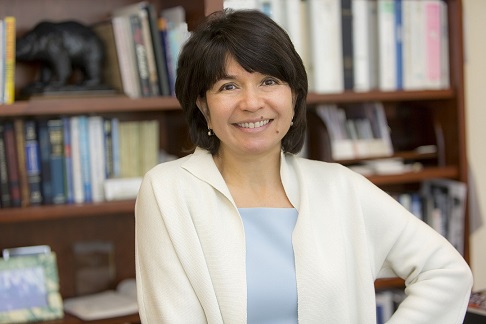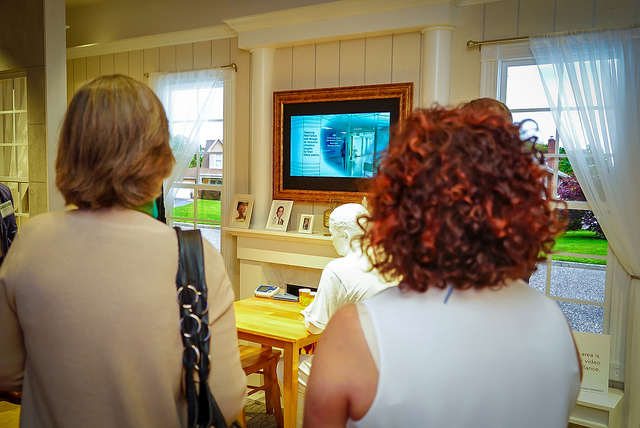Health information technology (IT) is revolutionizing how patients and physicians interact. Electronic health records (EHRs), such as Kaiser Permanente’s KP HealthConnect, allow physicians to have a more complete view of patient health information. EHRs also enable patients to have more access to their physicians through secure emails, phone calls, and video visits. To learn more about the ways KP HealthConnect impacts members and providers across Kaiser Permanente, the Institute for Health Policy spoke with Terhilda Garrido, vce president for health information technology transformation & analytics at Kaiser Permanente.
Health information technology is changing the practice of medicine across the nation. What are the most profound changes KP HealthConnect has brought to Kaiser Permanente?

Physicians now go to the computer as opposed to paper records for checking medical history, taking notes, and ordering prescriptions. Providers are alerted about patient issues and in some locations can bring in added expertise through a function called eConsult. Increasingly, our patients drive care. Patients have the ability to access their health information through kp.org. They have extremely high satisfaction with the patient portal, and those who use kp.org are 2.6 times more likely to remain Kaiser Permanente members than are non-users. Once people experience the convenience of accessing care online, they tend to stay with Kaiser Permanente.
As a result of these capabilities, outpatient primary care has changed. Half of primary care visits are now virtual. Secure emails and phone calls represent about 30 percent and 20 percent, respectively, of primary care contacts. In absolute terms, face-to-face visits per member per year are slightly decreasing, but our secure email visits per member are substantially increasing. Primary care access has improved because technology allows more contact with patients. Virtual visits replace some face-to-face visits, but primarily virtual visits occur after a face-to-face encounter has already taken place.
Have clinicians in Kaiser Permanente embraced KP HealthConnect and the changes that have come with it?
The organization has embraced the changes, but the impact on physicians is mixed. Some physicians embrace the technology because they feel it improves care for their patients, while some are still reconciling this new workflow with their already busy calendars. We are such a huge organization, so it’s not out of the ordinary to have such varying reactions. We are still trying to understand and support the best use of our providers’ time.
You have been involved with research exploring the unintentional health care disparities that can emerge with Health IT. Can you explain why these disparities occur?
We’ve conducted a few studies on eHealth disparities. After controlling for various factors, including age, sex, comorbidities, distance to a medical center, income, and education levels, researchers found that Asians, African Americans, and Latinos have lower levels of use of the patient portal. This finding shows us that there are underlying biases between non-Hispanic whites and other ethnic groups.
Recently, we’ve done focus groups with African Americans and Latinos to explore the reasons for their lower levels of enrollment. One reason for not using MyChart is the belief that the site is not secure. Other explanations include login difficulties and language issues, which Southern California has attempted to address by turning on Spanish MyChart. Fewer people cite lack of access to the technology as their reason for not using MyChart.
Are there any policies that could be implemented to help reduce eHealth disparities?
General education campaigns showing that virtual care augments rather than substitutes for in-person care would be beneficial. There are people who think virtual care is cheaper care used to keep patients out of physicians’ offices. There should be broader understanding that many of people are benefiting from virtual care, and it is still high quality care.
Also, the Centers for Medicare and Medicaid Services (CMS) could help to support appropriate funding for virtual care to help it become more mainstream. Despite the fact that the Office of the National Coordinator for Health IT (ONC) is encouraging organizations to adopt virtual care, CMS still only pays for face-to-face visits. This is contrary to the direction in which ONC is pushing healthcare. Acknowledging that virtual care is beneficial and reimbursing for it could make it more widely available and help reduce eHealth disparities.
What is the next frontier in health IT and care transformation, and how are we preparing for it?
The next improvements will encourage self-service for patients and help them be more engaged in their care. Social networking and apps, such as glucose measurers, weight monitors, and fitness trackers, will help patients be more involved. Apple’s Health Kit is an app that combines health information from various health apps. Video visits will also become more common as we move forward. Finally, we will see more machine learning in healthcare. Technology like IBM’s Watson – a machine that can observe, interpret, evaluate, and decide – may be used to help support clinical care.


